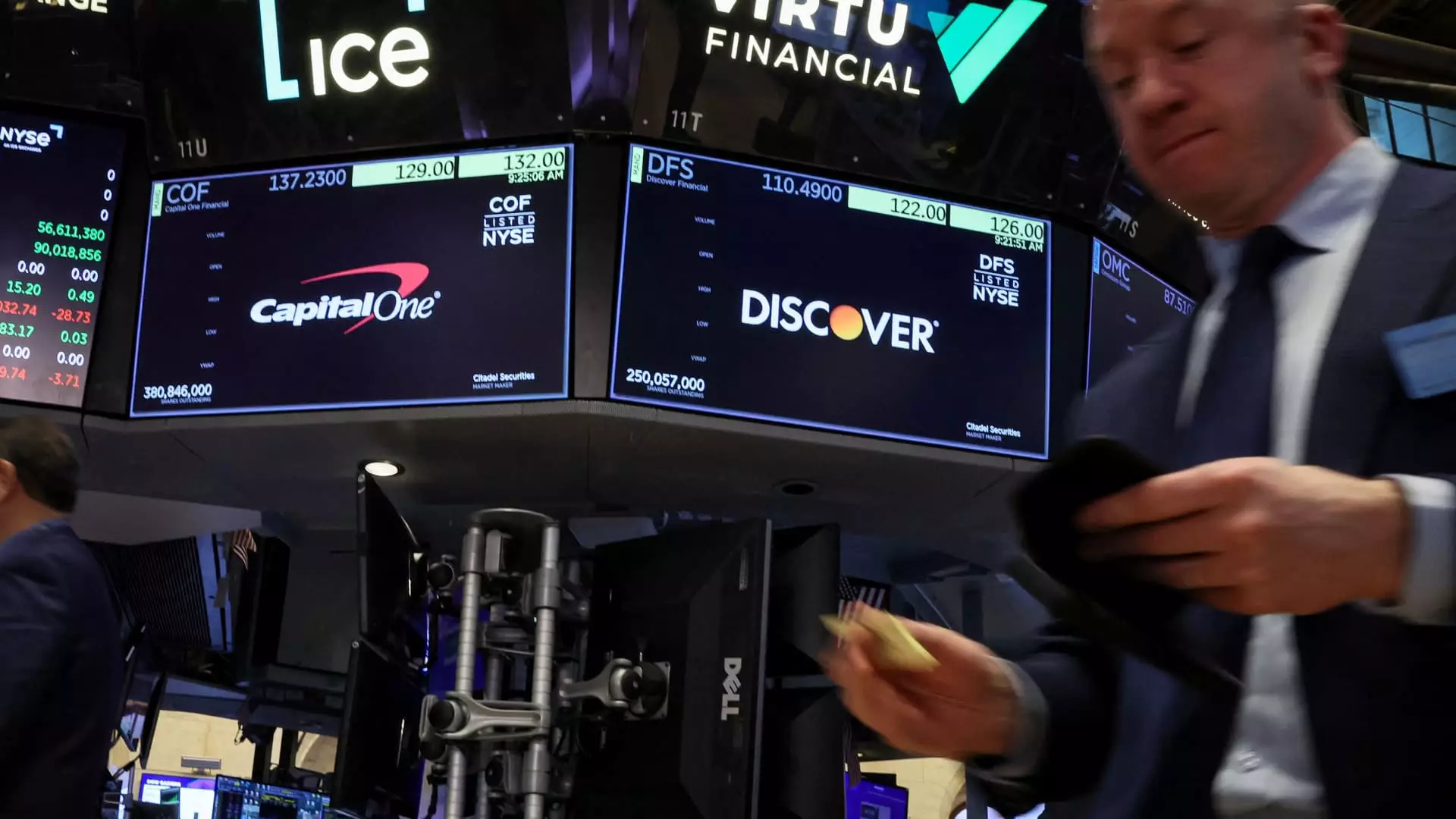Capital One has captured the attention of investors and analysts alike with the announcement of its ambitious merger with Discover Financial Services. In a bold statement from BTIG analysts, the potential impact on Capital One’s stock price could skyrocket to a staggering $427 per share, representing an astonishing 137% increase from its recent trading levels. This aggressive outlook underscores not only the optimism surrounding the merger but also the strategic capabilities that Capital One possesses, which could redefine its position in the competitive credit card market.
Merger announcements like this are often met with skepticism, especially in today’s regulatory climate, where antitrust considerations loom large. Yet, BTIG’s upgrade from a “hold” to a “buy” rating indicates a strong belief in the earnings potential that the merger could unlock. The analysts articulated a powerful narrative surrounding Capital One’s ability to capitalize on Discover’s payment network, allowing the company to carve out a more significant market share in the lucrative prime credit card sector.
Addressing Antitrust Concerns: A Delicate Dance
However, the excitement surrounding this merger isn’t without its challenges. Recent headlines highlighted an unconfirmed report regarding the Justice Department’s scrutiny of the potential consolidation. Specifically, concerns about the combined entity’s dominance in the subprime credit card market have emerged, raising alarms about potential antitrust violations. Despite these challenges, Capital One remains steadfast, asserting that the merger is compliant with existing regulatory frameworks.
What is more concerning is the broader context of regulatory scrutiny in which this merger exists. The legal battles involving Capital One and politically charged lawsuits, such as the one from the Trump Organization, add an extra layer of complexity. Allegations surrounding consumer protection violations exacerbate misunderstandings that can afflict financial institutions. Yet, it is worth noting that Capital One has firmly denied any politicization of its policies regarding account closures, positioning itself as an equitable player in the marketplace.
Capital One’s Financial Resilience and Strategic Maneuvers
Despite regulatory headwinds, BTIG analysts recognize that even without the merger, Capital One is on solid footing. Their assessment suggests a price target of $208 per share based solely on the company’s standalone performance, indicating a respectable 15% upside from where shares currently stand. This resilience is attributed to the substantial capital surplus that Capital One has generated since announcing the merger, which could pave the way for aggressive stock repurchase initiatives.
This financial strategy could effectively elevate earnings per share while maintaining the firm’s competitive stance against rivals such as American Express and Ally Financial. By tightening its underwriting standards in recent years, Capital One has positioned itself to weather the inevitable fluctuations of consumer behavior, demonstrating a wise commitment to risk management.
Market Sentiment and Investment Strategy
Capital One has also shown promising stock price stimuli even within the prevailing turbulence. Reports indicate that shares have rebounded following a dip triggered by regulatory concerns, thereby outperforming both the S&P 500 and the financial sector at large in recent weeks. Such resilience in a market conducive to volatility speaks volumes about investor confidence in the company, especially as they prepare for potential opportunities that the merger might unveil.
The potential for transaction cost reductions by leveraging Discover’s payment infrastructure highlights an innovative strategy that capitalizes on the synergy between the two firms. Analysts assert that any successful completion of the merger could facilitate a realignment of Capital One’s financial commitments away from traditional transaction networks, thus improving overall profitability.
The Path Ahead and Investor Outlook
The business community is paying close attention to Capital One’s next moves in navigating its way through possible regulatory demands. With the prospect of divesting parts of Discover’s subprime portfolio as a viable compromise option to alleviate concerns, Capital One is demonstrating an insightful agility that reflects the challenging landscape of modern finance.
The fundamental question that remains is whether enough investor sentiment can sustain a bullish trend for Capital One amidst such hurdles. Industry insiders, including prominent figures like Jim Cramer, are advocating for investors to hold tight to their shares, underscoring confidence that the Discover merger will ultimately gain approval. The prevailing sentiment is that once the regulatory fog clears, Capital One could emerge stronger and more competitive than ever before.
While challenges abound, the potential upside of Capital One’s strategic maneuvers, coupled with the promise of the Discover merger, makes it a compelling storyline in the financial sector. The next few months will be crucial in determining whether this potential is realized or stymied by regulatory pitfalls.

